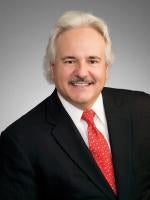Investments in research resulting in new drug inventions have long taken advantage of patent protection, but such investments may also benefit from market exclusivities granted by the Food and Drug Administration (the “FDA”). Both patent and market exclusivities encourage and protect the significant innovation and investments required to bring a new drug to market.1
For typical small molecule pharmaceuticals, the Hatch-Waxman Act established a “regulatory framework that sought to balance incentives for continued innovation by research-based pharmaceutical companies and opportunities for market entry by generic drug manufacturers.”2 Since generic versions of small molecule drugs may be chemically identical to the brand name version of the drug, a generic manufacturer can rely on FDA testing already performed on the brand name drug to support an application for approval of the generic version. This greatly increases the likelihood of entry of generic small molecule drugs into existing drug markets. Without the protections of patent rights and exclusivity incentives, pharmaceutical companies would have diminished incentives for the substantial investment to bring new small molecule drugs to market, since drug prices drop precipitously when protection expires. In the case of traditional small molecule drugs, typically manufactured through chemical synthesis, dramatic price drops of 50-60% are not unexpected.3 Hence the need for balance in marking the ambit of protection and exclusivity: too small and investment in drug innovation is discouraged; too broad, competition and consequent price reductions are too long delayed.
The challenge of striking such balances as to biologic drugs is far greater, or at least more challenging, than with respect to small molecule drugs. For unlike small molecule drugs, biologic drugs are protein-based molecules derived from living matter or manufactured through forms of biotechnology, which are of greater size and complexity than typical pharmaceuticals. Therefore, even after the patent rights and/or exclusivity rights expire for a biologic, significant technological barriers to market entry may remain after such rights expire. As a result, dramatic price decreases may not necessarily follow quickly in the wake of the expiration of patent or market exclusivities for a brand name biologic and the entry of a biologic competitor. But one must be wary of generalities: prices may in fact dramatically drop as to biologic drugs.
The Biologics Price Competition and Innovation Act of 2009 (“BPCI Act”), which became law on March 23, 2010, attempts to strike a similar balance as to biologics as Hatch-Waxman had for small molecule drugs, taking into account the technical challenges of biologics. The BPCI Act’s abbreviated drug approval process is loosely modeled on that used for generic small molecule drugs, creating an abbreviated drug approval process for biologic drugs (“follow-on biologics”) that are shown to be “biosimilar” or interchangeable with the brand name (“licensed”) biologic drugs listed by the FDA.4 The FDA’s Center for Drug Evaluation and Research provides a list of brand name biologic drugs (“reference products”).
But the BPCI only sets a statutory framework. The issue is setting the balance between encouraging innovation and expanding competition. As we mentioned, the complex nature of biologic drugs raises the question of whether follow-on biologics are as safe or effective in treatment of patients as their reference products. Consequently, a follow-on biologic may require additional animal and clinical testing before gaining FDA approval, perhaps making it harder for a follow-on biologic to enter the market, even if its reference product is no longer protected by patent coverage or market exclusivity.
Occasionally though, competitors will not face the same technical challenges in entering the market with a follow-on biologic. Where a reference product is composed from molecules already well-known and established in the market, it may be much easier for competitors to produce follow-on biologics. For example, this may be true in the case of antibody-drug conjugates (ADC)or immunoconjugates, which combine small molecules and known antibodies. A pharmaceutical manufacturer of an ADC may not face the same technical hurdles as a manufacturer tackling an unknown large complex molecule. Instead, the challenges to market entry for an ADC may not be all that different from synthesizing a small molecule drug. In such instances, if generic versions of the antibody have already been manufactured and the small molecule is well-known, a follow-on biologic ADC could be produced with substantial confidence that the follow-on biologic ADC will have comparable safety, efficacy and ease of use to that of the reference product, sufficient to warrant FDA approval. In such an instance, the price of a post-patent rights, post-market exclusivity biologic may be expected to behave more like a small molecule drug facing generic competition than other biologics.
The BPCI Act itself provides that its 12 year market exclusivity for reference product biologics does not apply to minor changes to a biologic, such as a “new indication, route of administration, dosing schedule, dosage form, delivery system, delivery device, or strength” or “a modification to the structure of the biological product that does not result in a change in safety, purity or potency.” 42 U.S.C. § 262(k)(7)(c). Indeed, extending exclusivity for brand name biologics comprised of previously well-known components, which may have already enjoyed their own market exclusivities, may raise anti-trust concerns not unlike those raised by the FTC in its Brief as Amicus Curiae, Mylan Pharm., Inc. v. Warner Chilcott Pub. Co., No. 12-3824 (E.D. Pa. Dec. 3, 2012), ECF No. 122. In that amicus brief, the FTC asserted that “pharmaceutical product redesigns can constitute exclusionary conduct” where the brand company withdraws the original product from the market or “achieve[s] the same result through indirect means . . . .” Id. at 10, 13. The brief went on to assert that the plaintiffs had asserted a plausible claim that “the defendants’ product reformulations constitute an unlawful means of preserving monopoly power in violation of Section 2 of the Sherman Act.” Id. at 14. Attempting to maintain market exclusivity through impermissible conduct that has the effect of effectively lengthening the term of patent rights or improperly broadening the scope of a patent could implicate the policy concerns underlying patent misuse doctrine. See Hovenkamp, Janis, Lemley and Leslie, IP and Antitrust, Chp 3 (2nd ed. Update 2014) (general description of patent misuse doctrine). See also, Princo Corp. v. International Trade Commission, 96 USPQ2d 1233, 1239 (Fed. Cir. 2010) (“The doctrine of patent misuse is thus grounded in the policy-based desire to ‘prevent a patentee from using the patent to obtain market benefit beyond that which inheres in the statutory patent right.”’). Cf. Brulotte v. Thys Co., 379 U.S. 29, 32 (1964) (“a patentee's use of a royalty agreement that projects beyond the expiration date of the patent is unlawful per se"; the continuing vitality of Brulotte will be the subject of Supreme Court review this term. See, Kimble v. Marvel Enterprises, Inc., 727 F.3d 856, (9th. Cir. 2013), petition for cert. granted, 82 USLW 3379, No. 13-720, (Dec. 12, 2014) (the Supreme Court will consider whether a royalty agreement that projects beyond the expiration date of the patent is unlawful per se)). In addition, minor changes and reformulations to well-known products can, of course, also be attacked under the patent laws on grounds of lack of novelty or anticipation and obviousness.
Ultimately, whether any given brand name biologic drug is vulnerable to market entry by a follow-on biologic may depend on the degree of its reliance on well-understood components. As described for ADC’s above, some brand name biologics may therefore be vulnerable to the typical 50-60% price drop seen in cases of generic small molecule competition. Accordingly, a careful review of the composition of a biologic drug is another factor that merits consideration in evaluating the advantages that may be provided by exclusivities.
1. While calculating the costs to bring a drug to market will vary widely based upon a multitude of factors, at least one recent study released by the Tufts Center for the Study of Drug Development, has projected the current out of pocket costs from development through market approval of the drug at approximately $1.4 billion. “Cost to Develop and Win Marketing Approval for a New Drug Is $2.6 Billion”, November 18, 2014, Tufts Center for the Study of Drug Development. http://csdd.tufts.edu/news/complete_story/pr_tufts_csdd_2014_cost_study.
2. Prepared Statement of the Federal Trade Commission Before the Committee on Judiciary, United States Senate (June 17, 2003).
3. Frank R. Lichtenberg and Gautier Duflos, “Time Release: The Effect of Patent Expiration on U.S. Drug Prices, Marketing, and Utilization by the Public,” Medical Progress Report, No. 11, October 2009.
4. A follow-on biologic is biosimilar to a brand-name product if it is deemed to be “highly similar to the reference product notwithstanding minor differences in clinically inactive components” and “there are no clinically meaningful differences between the [biosimilar] and the reference product in terms of safety, purity, and potency of the product.” 42 U.S.C. § 262(i)(2). A follow-on biologic is interchangeable if it meets the standard for biosimilarity and (1) it can be expected to produce the same clinical result as the reference product in any given patient and (2) for a product administered more than once, the risk, in terms of safety or diminished efficacy of switching between the two products, is not greater than the use of the reference product without such alternation. 42 U.S.C. § 262(k)(4).






 />i
/>i
